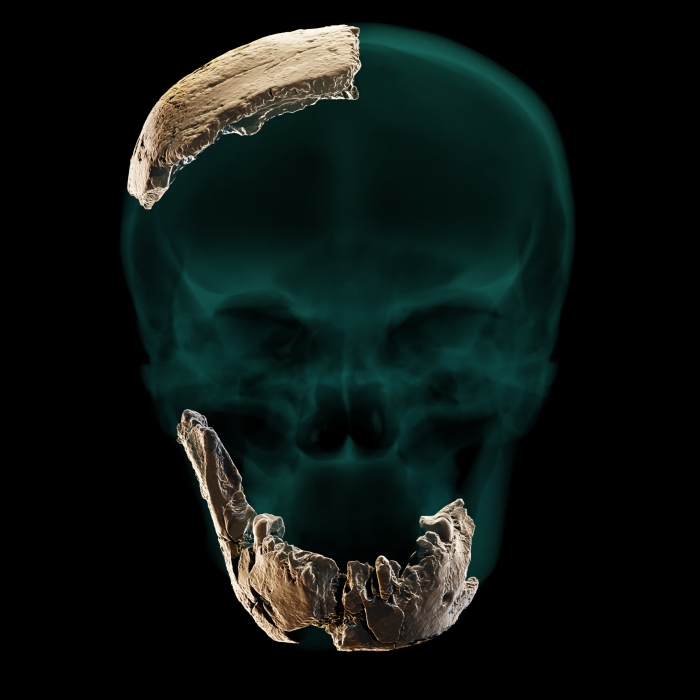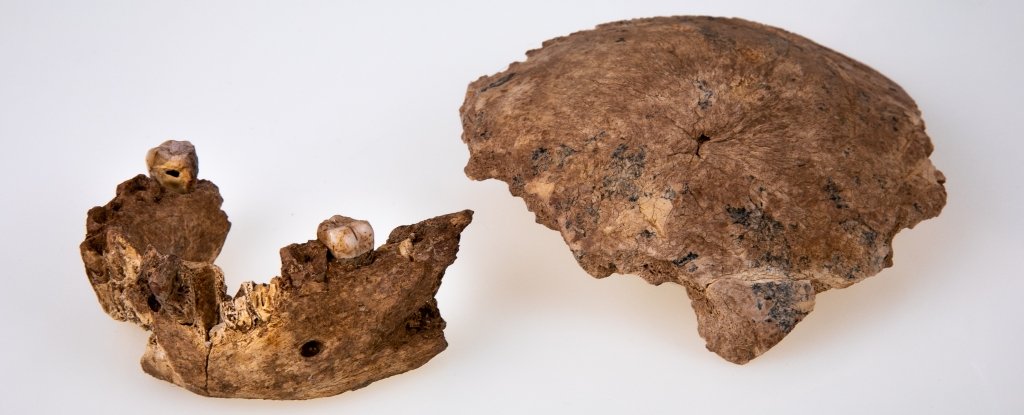Products You May Like
More than 120,000 years ago in the Levant, Homo sapiens lived side-by-side with a type of ancient human we didn’t know about – until now.
That’s according to new fossil evidence of this human uncovered by archaeologists – fragments of ancient skull and jaw bones, and teeth, which seem to fit both Neanderthal and Homo sapiens, but also… neither.
This newly discovered hominin type could be the ancestor to Neanderthal populations in Europe, answering the mystery of how these populations were infiltrated with H. sapiens DNA before their arrival in those regions. They also appear to be an ancestor to the archaic Homo populations in Asia.
Archaeologists have called the new ancient human the Nesher Ramla people, after the archaeological dig site in Israel where they were discovered.
“The discovery of a new type of Homo is of great scientific importance,” said anthropologist Israel Hershkovitz of Tel Aviv University in Israel, lead author of a paper describing the bones.
“It enables us to make new sense of previously found human fossils, add another piece to the puzzle of human evolution, and understand the migrations of humans in the old world. Even though they lived so long ago, in the late middle Pleistocene (474,000-130,000 years ago), the Nesher Ramla people can tell us a fascinating tale, revealing a great deal about their descendants’ evolution and way of life.”
The remains were excavated from around 8 meters below ground, at the open air Nesher Ramla site. There, archaeologists found a large cache of fossils – mostly of animal bones, but also some stone tools – and some intriguing fragments of ancient human bones.
They consisted of parietal bones – the top and sides of the skull – and an almost complete mandible, including a complete molar and most of the dental roots. The researchers dated these remains to between 140,000 and 120,000 years ago.
Virtual reconstruction, analysis, and comparison of these bones against other fossilized hominin bones revealed something interesting. The mandible and teeth seemed more like the jaws and teeth of Neanderthals; but the parietal bones were more similar to those of archaic Homo.
 Reconstruction of the skull. (Tel Aviv University)
Reconstruction of the skull. (Tel Aviv University)
In addition, the reconstructed skull was very different from that of H. sapiens, with larger teeth, a different skull structure, and no chin. The discovery suggests one of the last surviving populations of Middle Pleistocene Homo in the region, from about 400,000 years ago.
After the arrival of H. sapiens 200,000 years ago, the two types of humans shared the Levant for around 100,000 years, the researchers said.
“This is an extraordinary discovery,” said archaeologist Yossi Zaidner of The Hebrew University of Jerusalem in Israel, lead author on a second paper describing the cultural context of the assemblage.
“We had never imagined that alongside H. sapiens, archaic Homo roamed the area so late in human history. The archaeological finds associated with human fossils show that Nesher Ramla Homo possessed advanced stone-tool production technologies and most likely interacted with the local H. sapiens.”
The bones yielded no DNA that would allow a more exact determination of the Nesher Ramla people, but the researchers believe their discovery has important implications for our understanding of hominin emergence and migration.
Since the Levant connects Asia, Africa, and the Mediterranean, humans migrating between these regions would have passed through, making it a potential hotspot for intermingling.
“Our findings imply that the famous Neanderthals of Western Europe are only the remnants of a much larger population that lived here in the Levant – and not the other way around,” Hershkovitz said.
The researchers also found similarities with other fossils that had previously puzzled scientists, because they could not be fit neatly into either the Neanderthal or Homo categories. Fossils from the Tabun cave from 160,000 years ago, the Zuttiyeh cave from 250,000 years ago, and the Qesem cave from 400,000 years ago may also belong to the Nesher Ramla people.
If that’s the case, the findings could also solve the mystery of a “missing” population of Neanderthals, who had mated with H. sapiens over 200,000 years ago, before the latter’s arrival in Europe. The traces of this ancient association in European Neanderthal DNA had puzzled scientists.
“The oldest fossils that show Neanderthal features are found in Western Europe, so researchers generally believe the Neanderthals originated there. However, migrations of different species from the Middle East into Europe may have provided genetic contributions to the Neanderthal gene pool during the course of their evolution,” said anthropologist Rolf Quam of Binghamton University.
“This is a complicated story, but what we are learning is that the interactions between different human species in the past were much more convoluted than we had previously appreciated.”
The research has been published in two papers in Science, here and here.
